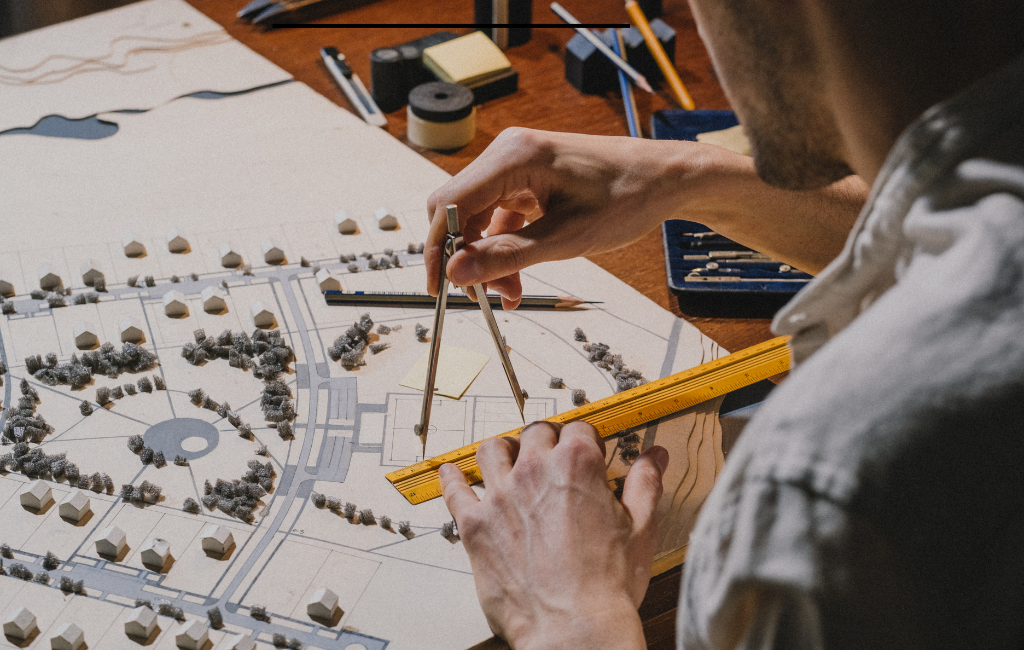Architect: Crafting Spaces Today
Architecture is a blend of artistry and engineering, shaping how people interact with their surroundings and defining the character of communities. The role of an architect extends beyond creating aesthetically pleasing structures; it encompasses the responsibility of shaping environments that enhance functionality, sustainability, and livability. In the evolving landscape of architectural practice, various aspects drive contemporary architects to innovate and adapt.
The Evolution of Architectural Design
Architects today are influenced by a complex interplay of factors, including advancements in technology, shifting cultural norms, and environmental considerations. Unlike previous eras where architectural design might have focused solely on grandeur or tradition, modern architects must balance multiple dimensions in their work. This includes integrating new materials and technologies, responding to environmental challenges, and considering the social implications of their designs.
Technological innovations have revolutionized the design process, making it possible for architects to experiment with forms and materials that were previously unimaginable. Computer-aided design (CAD) software, for instance, allows for precise simulations and modifications, leading to more efficient and creative solutions. These tools help architects visualize and test their ideas before they are built, thereby minimizing errors and optimizing the functionality of their designs.
Sustainability and Environmental Impact
In contemporary architecture, sustainability is a driving force. The focus on reducing environmental impact has led architects to explore renewable energy sources, eco-friendly materials, and energy-efficient systems. Green building practices are now a standard consideration in architectural design, reflecting a growing awareness of the need to address climate change and resource depletion.
Architects are increasingly using materials that have a lower carbon footprint and are more easily recyclable. Innovations such as green roofs, solar panels, and rainwater harvesting systems are becoming common features in new constructions. These practices not only help reduce the ecological impact of buildings but contribute to creating healthier living environments.
Cultural and Social Influences
Architecture is deeply intertwined with cultural and social dynamics. Modern architects must consider the historical and cultural contexts of their projects, ensuring that new structures complement and respect their surroundings. This includes understanding local traditions, social needs, and the historical significance of sites.
For instance, urban revitalization projects often involve preserving historical elements and introducing modern amenities. Balancing these aspects requires a sensitivity to the local community’s identity and heritage. Architects must engage with stakeholders to create spaces that foster social interaction and support community well-being.
Innovative Building Techniques
The push for innovation in architecture has led to the development of new building techniques and materials. Techniques such as 3D printing and modular construction are changing how buildings are designed and assembled. These methods offer greater flexibility and efficiency, allowing for rapid construction and the ability to experiment with complex shapes and structures.
3D printing, for example, enables the creation of intricate building components with precision, reducing waste and construction time. Modular construction involves prefabricating building sections off-site and assembling them on location, which can significantly cut down on project timelines and costs.
The Role of Architecture in Shaping Experiences
Beyond the physical aspects of buildings, architects play a key role in shaping the experiences of individuals within those spaces. The design of a space affects how people interact with their environment and each other. For example, the layout of public spaces like parks, plazas, and community centers can influence social interactions and enhance the quality of life.
Architectural design can impact mental well-being. Well-lit, spacious environments with natural elements tend to promote a sense of calm and comfort. Conversely, poorly designed spaces can contribute to stress and discomfort. By paying attention to factors such as lighting, acoustics, and spatial organization, architects can create environments that positively influence mood and behavior.
Collaboration and Multidisciplinary Approaches
Modern architectural projects often require collaboration across various disciplines. Architects frequently work alongside engineers, urban planners, landscape designers, and other professionals to bring a vision to life. This multidisciplinary approach ensures that all aspects of a project are considered and integrated, leading to more holistic and effective solutions.
For example, integrating landscape design into architectural plans can enhance the relationship between a building and its environment. Similarly, collaboration with structural engineers helps ensure that a building’s design is both aesthetically pleasing and structurally sound.
Future Trends in Architecture
Looking ahead, several trends are likely to shape the future of architecture. The integration of smart technologies into building design is one such trend. Smart buildings equipped with sensors and automated systems can optimize energy use, enhance security, and improve overall functionality.
Another emerging trend is the focus on resilient design. With the increasing frequency of extreme weather events, architects are developing strategies to make buildings more resistant to environmental stresses. This includes using materials and construction techniques that can withstand natural disasters and climate-related challenges.
Another emerging focus is on resilience and adaptability. As climate change and natural disasters become more prevalent, architects are designing buildings that can withstand extreme weather conditions and adapt to changing environmental circumstances. This includes the use of resilient materials and flexible design strategies that allow structures to respond effectively to various challenges.
Conclusion
The role of the architect has evolved significantly over time, reflecting changes in technology, environmental awareness, and societal needs. Modern architects are tasked with creating spaces that are not only functional and aesthetically pleasing but sustainable and responsive to the cultural context. By embracing innovation, collaboration, and a deep understanding of human experience, architects continue to shape the built environment in ways that enhance both individual and community well-being.
Architects today are at the forefront of addressing some of the most pressing issues facing modern society. By leveraging technology, embracing sustainability, and considering cultural and social impacts, they are shaping the built environment in innovative and meaningful ways. The practice of architecture continues to evolve, reflecting advancements in technology, shifts in societal values, and a growing awareness of environmental stewardship. As architects navigate these changes, they remain committed to creating spaces that enhance the quality of life and respond to the needs of an ever-changing world.
